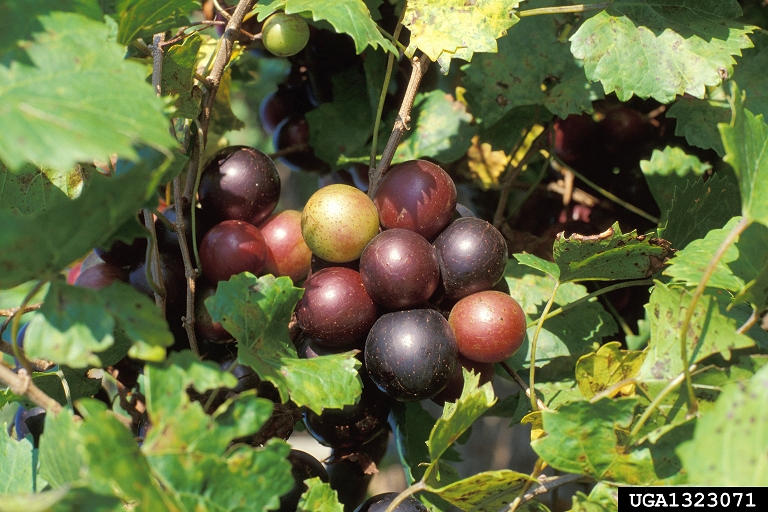I grew up with muscadine grapes. I liked them as a kid and still enjoy them today. In my opinion, they are a southern late summer and fall treat.
Not everyone shares in my fondness for this native fruit of the Southeastern United States. If you did not grow up here, muscadines may be an acquired taste. They are different than the bunch type grapes that most are accustomed to eating. As a matter of fact, most first timers require some instructions in how to eat a muscadine. Nowadays you can search “how to eat a muscadine” on the internet and find written instructions and even short videos on how to eat this grape.

Muscadines have thick skins (hulls) and contain fairly large seeds. Some muscadine purist may pop the entire fruit in their mouth, bite down and eat hull, pulp, juice and seeds. The few people that eat hull, seeds and all may do it for health benefits. The skin and seeds are full of antioxidants and nutrients. But most people do not like the thick and sometimes bitter hull or seeds. So, one technique is to place the grape with the stem scar facing upward in your mouth and squeeze or bite the grape. The sweet juice and pulp will burst into your mouth. The thick skin is then removed and discarded. The seeds are contained in the pulp. It can take some practice removing the seeds from the pulp while in the mouth. Some people enjoy the juice and spit out the pulp with seeds. Others use their teeth and tongue to remove the seeds and then eat the pulp. Some swallow pulp with seeds.
Apparently, muscadines were a pleasant find by the early European explorers to our area. Many names have been used to denote this native grape in the wild including Bullace, Bullis and Muscadine. ‘Scuppernong’ was the first named variety of the bronze muscadine discovered growing in the wild in North Carolina in the mid-1700s. Even though there are now numerous named varieties of the bronze muscadine such as ‘Carlos’, ‘Fry’ and ‘Summit’, many southerners still refer to all bronze types as Scuppernong. Purple or black varieties are commonly called muscadines.
Muscadines range from bronze to dark purple to black in color when ripe. There are more than one hundred improved varieties from which to choose.
Winter, December through February, is the time to plant bare-root vines. Check with local nurseries on availability. More information on selection, planting and care of muscadines is available at https://edis.ifas.ufl.edu/publication/HS100 or from the UF/IFAS Extension Office in your County.
- Know What You’re Doing when Amending Florida’s Sandy Soil - December 18, 2025
- Evaluate and Renovate Landscape During Fall - October 30, 2025
- Summer is Too Hot for Lawn Herbicides - August 23, 2025
